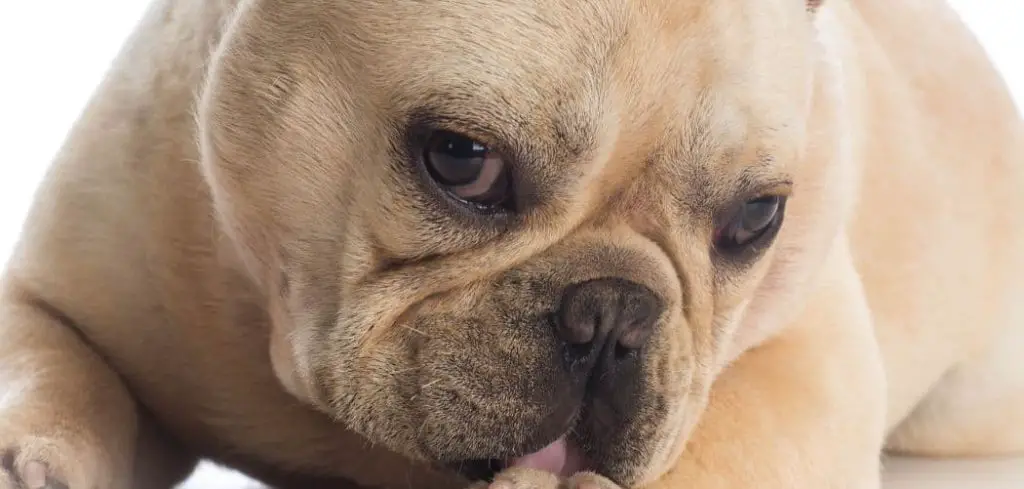It can be worrying when your dog refuses to eat unless you are home. While some dogs eat eagerly no matter who is around, others may only touch their food when their favorite person is present.
This behavior can feel flattering at first but can also raise concerns about separation anxiety, appetite issues, and long-term health.
We outline the common reasons for a dog only eating when you’re home, what you can do, and when to seek veterinary help.
Dog Only Eats When I’m Home — Why It Happens
A dog only eating when you’re home is usually a sign of attachment, comfort-seeking, or anxiety when left alone. Many dogs prefer to eat in the presence of their trusted person because it provides reassurance and routine.
In other cases, this behavior may be tied to separation anxiety, environmental stress, or picky eating habits reinforced by owner presence.
While it isn’t always an urgent medical issue, it can lead to skipped meals, weight loss, or stress if not addressed.

Dog Only Eats When I’m Home: Common Causes
Separation Anxiety
Dogs are pack animals by nature and feel safest when their bonded human is near. A dog with separation anxiety may avoid eating when left alone, saving their appetite for when you return.
You may notice pacing, whining, or destructive behavior in addition to refusing food. Over time, this can lead to malnutrition or digestive upset if the dog consistently skips meals during absences.
Read more: Dog Only Eats When Hand Fed (Why this happens)
Comfort and Security
Some dogs eat best when they feel secure, and for many, that security comes from their owner’s presence.
Eating is a vulnerable activity, and anxious or cautious dogs may only relax enough to eat when you’re nearby.
This is particularly common in rescue dogs, newly adopted pets, or dogs adjusting to a new environment.
Routine and Learned Behavior
Dogs thrive on routine. If you usually feed your dog when you’re home, they may associate eating exclusively with your presence.
Over time, this pattern becomes reinforced: the dog simply waits until you arrive, expecting the mealtime ritual to include you.
This isn’t always problematic unless it results in skipped meals or excessive waiting.
Picky Eating Reinforced by Owners
Some dogs are naturally selective with food, and owners unintentionally reinforce this behavior by offering meals only when they’re around.
A dog may refuse food when alone, knowing that waiting for you could mean tastier food, extra attention, or hand-feeding. This creates a cycle where the dog expects your involvement to make eating worthwhile.
Environmental Stressors
Noise, other pets, or an unfamiliar setting can discourage eating when you’re away. Your presence may provide the reassurance your dog needs to feel safe enough to eat.
In multi-pet households, some dogs refuse food when alone due to fear of competition or guarding issues, preferring to eat only when their owner mediates the environment.
Medical Concerns
In rarer cases, a dog eating only when you’re home could point to an underlying medical condition.
Dogs with nausea, dental pain, or digestive issues may need extra encouragement to eat, which they receive through your presence.
If a dog’s appetite changes suddenly, a veterinary checkup is important to rule out illness.
What to Do If Your Dog Only Eats When You’re Home
If your dog only eats when you’re home, start by creating a calm, consistent feeding routine.
Place meals down at the same time each day and give your dog a set window to eat, even if you’re not present. Over time, this teaches your dog that food is available regardless of your schedule.
Encourage independence by occasionally stepping out of the room during meals. Praise your dog when they begin to eat without you present, reinforcing that eating is safe even in your absence.
For dogs with separation anxiety, gradually increase the time you’re away and use calming tools like puzzle feeders, background music, or pheromone diffusers. These create a soothing environment and distract from your absence.
If your dog is a picky eater, avoid switching foods constantly or hand-feeding excessively. Stick to a balanced diet and ensure consistency so your dog learns that meals are not negotiable based on your presence.
In multi-pet households, consider feeding your dog in a quiet, separate space to reduce competition and stress. This can encourage eating even when you’re not around.
When to Call or Visit Your Vet
While many cases of a dog only eating when you’re home are behavioral, there are times when veterinary help is needed. If your dog is losing weight, vomiting, or showing signs of illness along with selective eating, schedule an exam right away.
Dogs that suddenly develop this behavior without a history of anxiety or attachment may be experiencing pain, nausea, or dental issues. Medical causes should always be ruled out, especially in older dogs or those with other concerning symptoms.
If separation anxiety is severe — with refusal to eat, destructive behavior, or excessive distress when you’re gone — a veterinarian or veterinary behaviorist can recommend treatment options. These may include training strategies, anxiety-reducing supplements, or medication.
Read more: Dog Only Eats at Night (Should you worry?)
Key Takeaway
A dog only eating when you’re home is often a sign of attachment, comfort-seeking, or mild anxiety. While it isn’t always a medical concern, it can affect your dog’s eating habits and health over time.
By creating consistent routines, reducing dependence on your presence, and addressing any underlying stressors, most dogs can learn to eat more independently.
If the behavior is sudden, severe, or paired with illness, consulting your veterinarian is the safest step to ensure your dog’s well-being.
